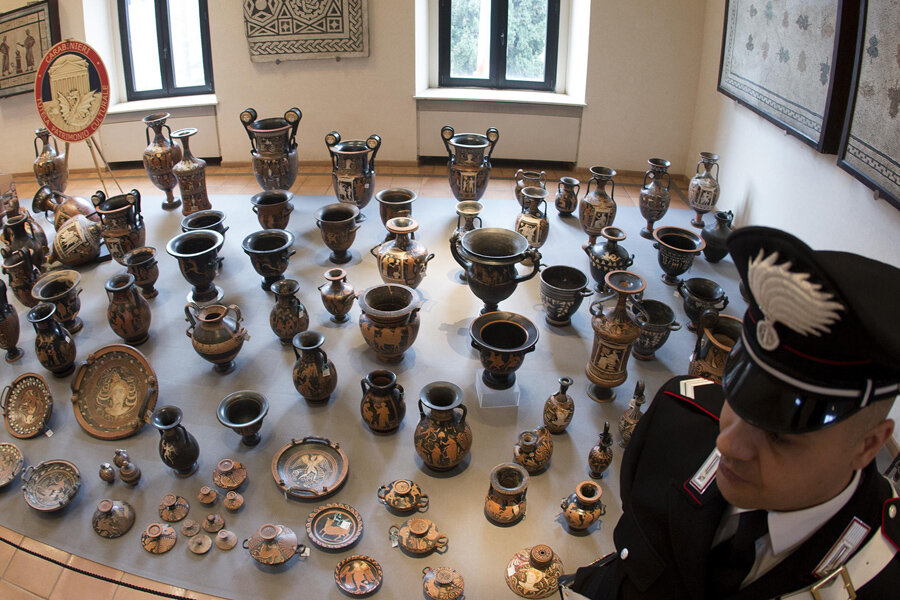Italian authorities find looted art and antiquities, worth millions
Loading...
| Rome
Authorities on Wednesday unveiled what they said was a record haul of rare antiquities illegally looted from Italy and discovered during raids on Swiss warehouses belonging to a Sicilian former art dealer.
Police estimated the value of the 5,361 vases, kraters, bronze statues and frescoes at $58 million.
The works, from the 8th century B.C. to the 3rd century, were laid out Wednesday at the Terme di Diocleziano National Roman Museum and may go on public display before being returned to museums in southern Italy, from where they originated.
"This is by a long shot the biggest recovery in history in terms of the quantity and quality of the archaeological treasures," Carabineri Gen. Mariano Mossa told a news conference.
The items were found during an investigation into Basel-based art dealer Gianfranco Becchina and his wife, accused by prosecutors of being part of an antiquities trafficking network that involved "tombaroli" tomb raiders in southern Italy, dealers and buyers around the globe.
An email to Becchina's olive oil farm in Sicily was not immediately returned. Police said he was free after the statute of limitations expired on the charges. In a recent open letter responding to police accusations against him in Italy's La Repubblica newspaper, Becchina insisted on his innocence and said he had never been convicted, much less tried, and had never been able to defend himself.
In a press release, the carabineri said the investigation showed how dealers would forge provenance papers for the antiquities and create fictitious histories for them, so that museums and private collectors could in theory buy them in good faith.
As a result, perhaps more important than the antiquities themselves is that Italian authorities now have detailed documentation of Becchina's inventory, including photos and receipts, that was also found in the warehouses, police said.
David Gill, professor of archaeological heritage at University Campus Suffolk and author of the "Lootingmatters" blog, said the documentation will likely point to objects that are now in top museums and will certainly be on the Italians' list for repatriation.
For over a decade, Italy has been on a campaign to reclaim treasures that were looted from its soil and sold to top museums and private collectors.





